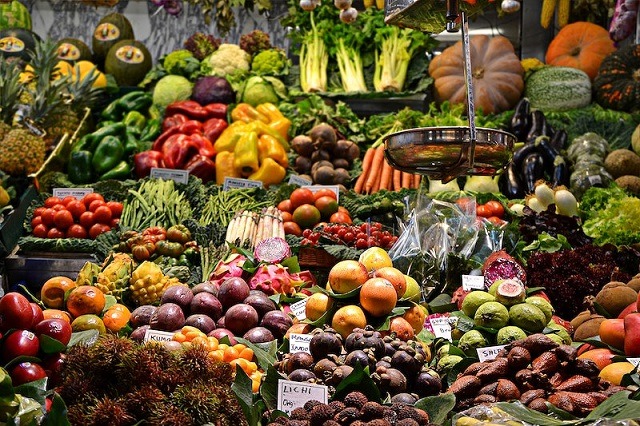The original blog was published at Mother Pelican in January 2023
Few experts in population biology, related fields of science, demography, and economics appear ready and willing to see what is in front of the naked eye. Too many experts have confused cause and effect and thereby vitiated the coherence of mind and clarity of vision required to sensibly interpret evidence of whatsoever could be objectively correlated with reality. As a consequence, they appear to find the ecological science of human population dynamics simultaneously unbelievable yet virtually irrefutable [1], [2].
We do not have a food production problem. Food harvests are abundant; food is sufficient to feed the human community plus many more. The problem is food distribution. Granted the fair and equitable redistribution of available food to the human community writ large would lead in all likelihood to a temporary, exacerbating increase in absolute global human population numbers; however, limiting total global food production that humans consume would, in the course of space-time, return H. sapiens to balance within the natural world.
Consider biomimicry, the design and production of materials, structures, and systems that are modeled on biological entities and processes. For a moment let us assume that nature has the answers to the problems human beings have induced by relentlessly increasing the human food supply, and must now confront and overcome. By following the laws of the natural world, by changing our way to conform with nature, humans would consciously and deliberately mimic nature’s way where we find that all resources (including food to feed a growing population) are categorically limited by the size and finite resources of the planet which is our planetary home, the house humans have filled beyond its natural carrying capacity through the massive deployment of complex systems and inventive technologies.
One of the worst mistakes of the second half of the 20th Century has been and continues to be generated by the United Nations. A delusion in the form of a meme, or unquestioned cultural transmission, has been viewed as real and spread virally by misusing the imprimatur of science upon which the meme is not actually based. Large-scale human organizations have held tightly to versions of the same meme prior to this time period. Most experts became captives of a satisfying false cultural transmission: humans must continuously increase food production to feed a growing population. This misperception/misconception of reality cloaks our view of the way the world really works with regard to the population dynamics of all species within the evolutionary ‘tree of life’, including H. sapiens.
There are hallmarks that define a deluded cultural transmission. They include political convenience, economic expediency, social suitability, religious tolerance, and legalization. All seem necessary for a false meme to become culturally prescribed. Purveyors of false memes willfully ignore the questioning of ideas upon which their misinformation is based — a hallmark of science. Without the support of science, we find ourselves in a festering haze of delusion.
With regard to its population dynamics, our evolving memetic species has a vital task. Substitute a scientifically founded meme for the unquestioned false one. Then the new meme would be: increases in the total production of food for human consumption lead to a global population increase of H. sapiens. We would acknowledge not only that we have a food distribution problem but also a problem derived from our tragic failure to use available ways and means to prevent unwanted births humanely.
How the human community chooses to act in response to this daunting predicament is something others more capable than I will have to address and find a way to overcome. Years ago, before the 21st century began to unfold, my spouse advised me not to communicate the ecological science of human population dynamics until I had a solution to the existential situation disclosed by the evidence. I told her then and say to all now, I do not have answers to the thorny questions or solutions to difficult problems the heretofore uncontested science raises. Please allow me to add the belief that any program of action to rein in the size of the human population by limiting the human food supply must begin by taking simultaneous steps to feed the human community as well as to save the flourishing of life (i.e., biodiversity) as we know it.
It is neither necessary nor sustainable to continue increasing food production to feed a growing human population. On the contrary, such a determination ultimately carries with it profoundly harmful consequences. In the case of H. sapiens, the species eats itself out of house and home.
References
[1] Human Population Numbers as a Function of Food Supply, Russell Hopfenberg & David Pimentel, Environment Development and Sustainability, 3(1):1-15, January 2021.
[2] Human Carrying Capacity Is Determined by Food Availability, Russell Hopfenberg, Population and Environment, 25(2):109-117, January 2003.
Steven Earl Salmony, Ph.D., M.P.A. is a retired practicing psychologist. In 2001 Steve founded the AWAREness Campaign on the Human Population to raise the consciousness of the colossal threat that the unbridled, near-exponential growth of absolute global human population numbers poses for life as it is known to us. His campaign has focused upon the best available science of human population dynamics and the topic of human overpopulation of earth in our time. He can be reached at sesalmony@aol.com.
The MAHB Blog is a venture of the Millennium Alliance for Humanity and the Biosphere. Questions should be directed to joan@mahbonline.org
The views and opinions expressed through the MAHB Website are those of the contributing authors and do not necessarily reflect an official position of the MAHB. The MAHB aims to share a range of perspectives and welcomes the discussions that they prompt.
